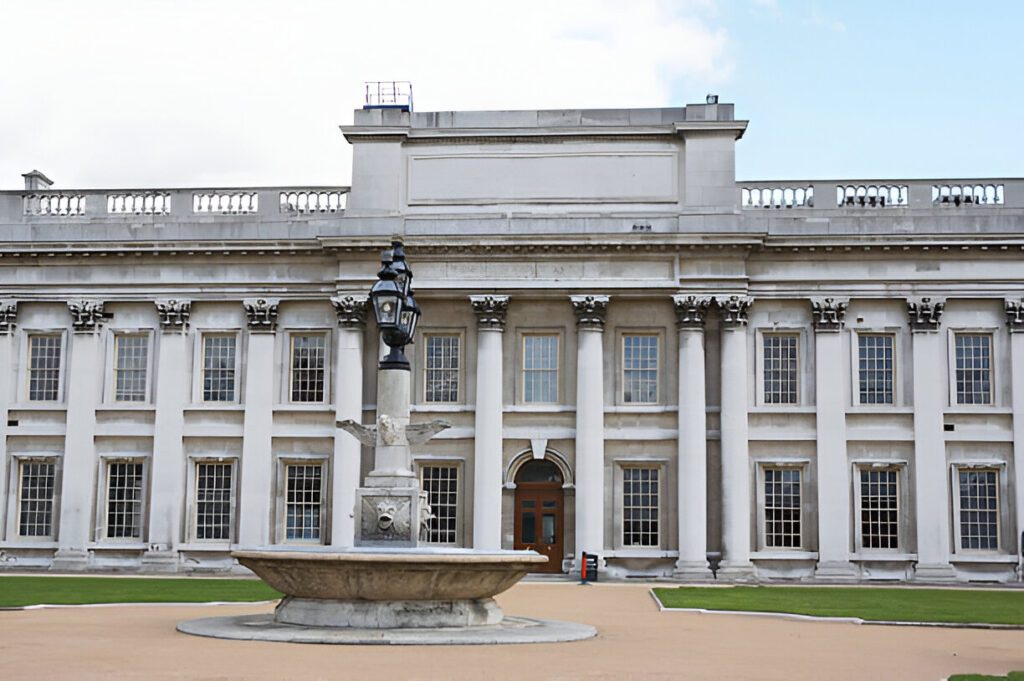Inner London Education Athority has some top reserved secrets that you have not been aware of, informations that are not totally available to the public. In this article we will reveal to you the reserved secrets about Inner London Education Authority. Ensure to read the article to the end so as to get the full detailed. Feel free to skip to the sub-topic that interest you using the table of contents on the page.
Introduction to the Inner London Education Authority (ILEA)
The Inner London Education Authority (ILEA) was one of the most significant education authorities in the United Kingdom, overseeing schools and education in the inner London boroughs. Established in 1965 and functioning until its abolition in 1990, the ILEA played a central role in shaping the educational landscape of the capital, particularly in areas known for social and economic challenges.
The authority was often praised for its progressive policies, especially in the fields of comprehensive education and multiculturalism, but also faced criticism for financial inefficiencies and political conflict.
Historical Background of the Inner London Education Authority
The ILEA was born out of the London Government Act of 1963, which reorganized local government in London. It inherited its functions from the London County Council (LCC), which had been responsible for education since 1904. With the creation of the Greater London Council (GLC) in 1965, the ILEA was established to manage education within the 12 inner London boroughs and the City of London. This marked the beginning of a focused and centralized approach to education in one of the most diverse and densely populated parts of the country.
The Formation and Establishment of the ILEA
The ILEA was officially constituted in 1965, following the dissolution of the LCC, and tasked with managing schools, colleges, and further education institutions in inner London. It was designed to ensure that education in inner London was centrally coordinated, allowing for a more consistent and equitable distribution of resources. At its peak, the ILEA was responsible for over 1,000 schools, 10 polytechnics, and various other educational institutions.
The formation of the ILEA was driven by the need for a specialized authority that could tackle the unique educational challenges of inner London, such as poverty, overcrowding, and linguistic diversity, which required tailored policies that might not have been effective in other regions of the UK.
ILEA’s Political Composition and Governance Structure

The ILEA’s political composition was primarily shaped by the Greater London Council (GLC), with the majority of its members elected through the GLC. Over time, the ILEA became a battleground for political ideologies, with Labour and Conservative parties vying for control.
During much of its existence, the ILEA was controlled by Labour, known for its progressive stance on education. This political dominance allowed the ILEA to implement socially conscious policies, such as promoting comprehensive education and supporting multicultural curriculums. However, this also attracted criticism from conservative factions, particularly for what some saw as excessive spending and inefficiency.
The governance structure of the ILEA consisted of elected representatives from the GLC and the inner London boroughs, as well as appointed members, including experts in education. This structure enabled the authority to have a degree of autonomy in shaping its policies, although it was still influenced by national government priorities.
Key Political Controversies Surrounding the ILEA
Throughout its existence, the ILEA was embroiled in political controversies, often reflecting the broader ideological battles between the Labour and Conservative parties. The authority’s emphasis on comprehensive schooling and its liberal approach to education, including policies on race and sex education, were frequently criticized by conservative opponents.
The ILEA’s spending was also a point of contention. Its budgets were among the largest of any local education authority in the UK, and critics, especially in the Conservative government led by Margaret Thatcher, accused the ILEA of financial mismanagement and overspending. These criticisms eventually played a part in the authority’s abolition.
List of Leaders and Notable Figures in the ILEA’s History
Several influential figures played key roles in the development of the ILEA:
- Ashley Bramall (1970–1981): A Labour politician and one of the longest-serving leaders of the ILEA. Bramall was instrumental in promoting comprehensive education and expanding support for multiculturalism in London’s schools.
- Frances Morrell (1983–1987): Another Labour leader, Morrell was known for her efforts to incorporate gender equality and anti-racist education into the ILEA’s policies.
- Margaret Thatcher: Although not directly involved in the ILEA, Thatcher, as Education Secretary and later Prime Minister, had a profound influence on the authority’s trajectory, particularly with her policies that ultimately led to its abolition.
These figures were at the forefront of the ideological battles over the future of London’s education system.
Educational Policies and Initiatives of the ILEA
One of the defining features of the ILEA was its progressive approach to education. The authority was a strong proponent of comprehensive education, advocating for the abolition of selective grammar schools and the creation of schools that served children of all abilities.
The ILEA was also known for pioneering multicultural education, reflecting the diversity of the inner London population. Schools under its jurisdiction were encouraged to embrace a curriculum that recognized the cultural backgrounds of students, particularly from African, Caribbean, and South Asian communities. This approach aimed to foster inclusion and combat racism in the classroom.
Additionally, the ILEA introduced programs focused on special education needs (SEN), vocational education, and adult education, which sought to make education more accessible to a broader range of students.
ILEA’s Role in the Development of London’s Schools and Education System
The ILEA had a profound impact on the development of the education system in inner London. Its policies led to the modernization of many schools and the expansion of further education facilities, including polytechnics and adult education centers.
Under the ILEA, schools were encouraged to adopt a holistic approach to education, focusing not only on academic achievement but also on social and emotional development. The authority supported initiatives such as free school meals, extracurricular programs, and the development of specialized schools for the arts and technology.
Additional Functions of the ILEA Beyond Education

Beyond its direct educational responsibilities, the ILEA played a significant role in community development. The authority often worked closely with local councils and community organizations to provide support services such as libraries, recreational facilities, and youth programs.
The ILEA also initiated cultural programs, particularly in the performing arts, which aimed to enhance the cultural life of inner London. These programs often focused on engaging young people from disadvantaged backgrounds, offering them opportunities to participate in theater, music, and visual arts.
ILEA’s Influence on National Education Policy
The ILEA’s progressive policies did not only influence London but also had an impact on national education debates. The authority’s approach to comprehensive education and its emphasis on inclusivity were often held up as models for other parts of the UK.
However, the ILEA’s policies also attracted significant opposition, particularly from Conservative governments, which viewed its approach as too radical and costly. The debates surrounding the ILEA influenced national discussions on the role of local education authorities and the balance between central government control and local autonomy.
Major Challenges and Criticisms Faced by the ILEA
While the ILEA was praised for its progressive initiatives, it also faced numerous challenges and criticisms. Financial mismanagement was one of the most significant issues, with reports of overspending leading to increased scrutiny from both the public and the central government.
The authority’s liberal policies, particularly on sex education, multiculturalism, and special education, were also the subject of heated political debates. Critics, especially from conservative circles, accused the ILEA of pushing a left-wing agenda at the expense of traditional academic standards.
Reconstitution of the ILEA
In response to growing criticisms, there were several attempts to restructure and reform the ILEA. In 1986, the abolition of the Greater London Council (GLC) led to changes in the way the ILEA was governed, with more power being transferred to the London boroughs.
These reforms, however, did little to silence the authority’s critics, who continued to push for its complete dissolution.
Public Perception and Impact of the ILEA on Inner London Communities
Public perception of the ILEA was mixed. While many praised its commitment to social justice and educational equality, others viewed it as inefficient and overly bureaucratic.
For inner London communities, the ILEA was often seen as a vital institution, particularly for disadvantaged groups who benefited from its policies on comprehensive education and multiculturalism. However, concerns over rising taxes and school standards meant that it never enjoyed universal support.
The Abolition of the Inner London Education Authority

The Conservative government under Margaret Thatcher, which came to power in 1979, was particularly critical of the ILEA’s perceived inefficiencies. In 1990, following a series of reforms and growing political pressure, the ILEA was finally abolished.
The abolition was part of a broader movement to reduce the power of local authorities and increase central government control over education. The responsibilities of the ILEA were devolved to the individual inner London boroughs, each of which took over the management of its schools.
Aftermath of the ILEA’s Abolition
The abolition of the ILEA had a profound impact on inner London’s education system. Some boroughs struggled to manage their new responsibilities, leading to concerns about inconsistent educational standards across the city.
While some argued that decentralization allowed for more localized decision-making, others contended that the abolition of the ILEA weakened inner London’s ability to tackle deep-rooted educational inequalities.
Legacy of the ILEA in Modern Education Policy
Despite its dissolution, the legacy of the ILEA continues to influence education policy in London and beyond. Its commitment to comprehensive education and multiculturalism helped shape the broader national conversation about inclusivity in schools.
In many ways, the debates over the ILEA foreshadowed current discussions about the role of local authorities in education, the balance between centralization and autonomy, and the importance of equity in education
Feel free to share this article using the social media handles below



